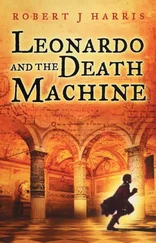Robert Pirsig - Zen and the Art of Motorcycle Maintenance
Здесь есть возможность читать онлайн «Robert Pirsig - Zen and the Art of Motorcycle Maintenance» весь текст электронной книги совершенно бесплатно (целиком полную версию без сокращений). В некоторых случаях можно слушать аудио, скачать через торрент в формате fb2 и присутствует краткое содержание. Жанр: Современная проза, на английском языке. Описание произведения, (предисловие) а так же отзывы посетителей доступны на портале библиотеки ЛибКат.
- Название:Zen and the Art of Motorcycle Maintenance
- Автор:
- Жанр:
- Год:неизвестен
- ISBN:нет данных
- Рейтинг книги:5 / 5. Голосов: 2
-
Избранное:Добавить в избранное
- Отзывы:
-
Ваша оценка:
- 100
- 1
- 2
- 3
- 4
- 5
Zen and the Art of Motorcycle Maintenance: краткое содержание, описание и аннотация
Предлагаем к чтению аннотацию, описание, краткое содержание или предисловие (зависит от того, что написал сам автор книги «Zen and the Art of Motorcycle Maintenance»). Если вы не нашли необходимую информацию о книге — напишите в комментариях, мы постараемся отыскать её.
Zen and the Art of Motorcycle Maintenance — читать онлайн бесплатно полную книгу (весь текст) целиком
Ниже представлен текст книги, разбитый по страницам. Система сохранения места последней прочитанной страницы, позволяет с удобством читать онлайн бесплатно книгу «Zen and the Art of Motorcycle Maintenance», без необходимости каждый раз заново искать на чём Вы остановились. Поставьте закладку, и сможете в любой момент перейти на страницу, на которой закончили чтение.
Интервал:
Закладка:
His kind of rationality has been used since antiquity to remove oneself from the tedium and depression of one’s immediate surroundings. What makes it hard to see is that where once it was used to get away from it all, the escape has been so successful that now it is the “it all” that the romantics are trying to escape. What makes his world so hard to see clearly is not its strangeness but its usualness. Familiarity can blind you too.
His way of looking at things produces a kind of description that can be called an “analytic” description. That is another name of the classic platform from which one discusses things in terms of their underlying form. He was a totally classic person. And to give a fuller description of what this is I want now to turn his analytic approach back upon itself… to analyze analysis itself. I want to do this first of all by giving an extensive example of it and then by dissecting what it is. The motorcycle is a perfect subject for it since the motorcycle itself was invented by classic minds. So listen:
A motorcycle may be divided for purposes of classical rational analysis by means of its component assemblies and by means of its functions.
If divided by means of its component assemblies, its most basic division is into a power assembly and a running assembly.
The power assembly may be divided into the engine and the power-delivery system. The engine will be taken up first.
The engine consists of a housing containing a power train, a fuel-air system, an ignition system, a feedback system and a lubrication system.
The power train consists of cylinders, pistons, connecting rods, a crankshaft and a flywheel.
The fuel-air system components, which are part of the engine, consist of a gas tank and filter, an air cleaner, a carburetor, valves and exhaust pipes.
The ignition system consists of an alternator, a rectifier, a battery, a high-voltage coil and spark plugs.
The feedback system consists of a cam chain, a camshaft, tappets and a distributor.
The lubrication system consists of an oil pump and channels throughout the housing for distribution of the oil.
The power-delivery system accompanying the engine consists of a clutch, a transmission and a chain.
The supporting assembly accompanying the power assembly consists of a frame, including foot pegs, seat and fenders; a steering assembly; front and rear shock absorbers; wheels; control levers and cables; lights and horn; and speed and mileage indicators.
That’s a motorcycle divided according to its components. To know what the components are for, a division according to functions is necessary:
A motorcycle may be divided into normal running functions and special, operator-controlled functions.
Normal running functions may be divided into functions during the intake cycle, functions during the compression cycle, functions during the power cycle and functions during the exhaust cycle.
And so on. I could go on about which functions occur in their proper sequence during each of the four cycles, then go on to the operator-controlled functions and that would be a very summary description of the underlying form of a motorcycle. It would be extremely short and rudimentary, as descriptions of this sort go. Almost any one of the components mentioned can be expanded on indefinitely. I’ve read an entire engineering volume on contact points alone, which are just a small but vital part of the distributor. There are other types of engines than the single-cylinder Otto engine described here: two-cycle engines, multiple-cylinder engines, diesel engines, Wankel engines… but this example is enough.
This description would cover the “what” of the motorcycle in terms of components, and the “how” of the engine in terms of functions. It would badly need a “where” analysis in the form of an illustration, and also a “why” analysis in the form of engineering principles that led to this particular conformation of parts. But the purpose here isn’t exhaustively to analyze the motorcycle. It’s to provide a starting point, an example of a mode of understanding of things which will itself become an object of analysis.
There’s certainly nothing strange about this description at first hearing. It sounds like something from a beginning textbook on the subject, or perhaps a first lesson in a vocational course. What is unusual about it is seen when it ceases to be a mode of discourse and becomes an object of discourse. Then certain things can be pointed to.
The first thing to be observed about this description is so obvious you have to hold it down or it will drown out every other observation. This is: It is just duller than ditchwater. Yah-da, yah-da, yah-da, yah-da, yah, carburetor, gear ratio, compression, yah-da-yah, piston, plugs, intake, yah-da-yah, on and on and on. That is the romantic face of the classic mode. Dull, awkward and ugly. Few romantics get beyond that point.
But if you can hold down that most obvious observation, some other things can be noticed that do not at first appear.
The first is that the motorcycle, so described, is almost impossible to understand unless you already know how one works. The immediate surface impressions that are essential for primary understanding are gone. Only the underlying form is left.
The second is that the observer is missing. The description doesn’t say that to see the piston you must remove the cylinder head. “You” aren’t anywhere in the picture. Even the “operator” is a kind of personalityless robot whose performance of a function on the machine is completely mechanical. There are no real subjects in this description. Only objects exist that are independent of any observer.
The third is that the words “good” and “bad” and all their synonyms are completely absent. No value judgments have been expressed anywhere, only facts.
The fourth is that there is a knife moving here. A very deadly one; an intellectual scalpel so swift and so sharp you sometimes don’t see it moving. You get the illusion that all those parts are just there and are being named as they exist. But they can be named quite differently and organized quite differently depending on how the knife moves.
For example, the feedback mechanism which includes the camshaft and cam chain and tappets and distributor exists only because of an unusual cut of this analytic knife. If you were to go to a motorcycle-parts department and ask them for a feedback assembly they wouldn’t know what the hell you were talking about. They don’t split it up that way. No two manufacturers ever split it up quite the same way and every mechanic is familiar with the problem of the part you can’t buy because you can’t find it because the manufacturer considers it a part of something else.
It is important to see this knife for what it is and not to be fooled into thinking that motorcycles or anything else are the way they are just because the knife happened to cut it up that way. It is important to concentrate on the knife itself. Later I will want to show how an ability to use this knife creatively and effectively can result in solutions to the classic and romantic split.
Phædrus was a master with this knife, and used it with dexterity and a sense of power. With a single stroke of analytic thought he split the whole world into parts of his own choosing, split the parts and split the fragments of the parts, finer and finer and finer until he had reduced it to what he wanted it to be. Even the special use of the terms “classic” and “romantic” are examples of his knifemanship.
But if this were all there were to him, analytic skill, I would be more than willing to shut up about him. What makes it important not to shut up about him was that he used this skill in such a bizarre and yet meaningful way. No one ever saw this, I don’t think he even saw it himself, and it may be an illusion of my own, but the knife he used was less that of an assassin than that of a poor surgeon. Perhaps there is no difference. But he saw a sick and ailing thing happening and he started cutting deep, deeper and deeper to get at the root of it. He was after something. That is important. He was after something and he used the knife because that was the only tool he had. But he took on so much and went so far in the end his real victim was himself.
Читать дальшеИнтервал:
Закладка:
Похожие книги на «Zen and the Art of Motorcycle Maintenance»
Представляем Вашему вниманию похожие книги на «Zen and the Art of Motorcycle Maintenance» списком для выбора. Мы отобрали схожую по названию и смыслу литературу в надежде предоставить читателям больше вариантов отыскать новые, интересные, ещё непрочитанные произведения.
Обсуждение, отзывы о книге «Zen and the Art of Motorcycle Maintenance» и просто собственные мнения читателей. Оставьте ваши комментарии, напишите, что Вы думаете о произведении, его смысле или главных героях. Укажите что конкретно понравилось, а что нет, и почему Вы так считаете.












